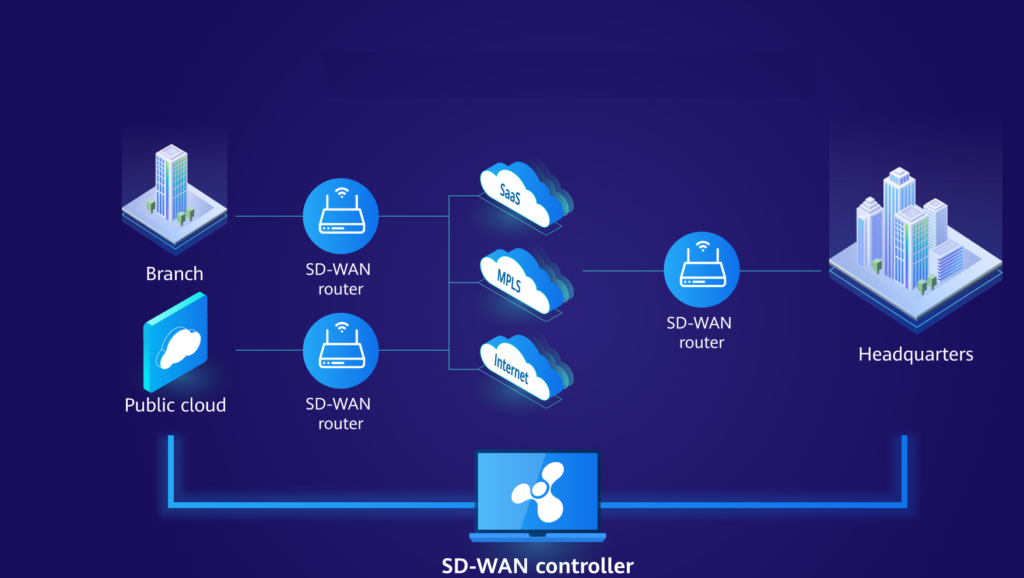

SD-WAN is a software-defined approach to managing the WAN.
An SD-WAN has a virtual WAN architecture and a software-driven technology. A key element of an SD-WAN is its centralized control, so that network connections, security mechanisms, policies, application flows and general administration are separated from the associated hardware.
SD-WAN’s architecture enables a high-speed IP communication framework between a branch office and headquarters – as well as among branch offices – even over large geographic areas. The two devices form a transparent, high-speed data tunnel between them by combining access resources on each side.
Key advantages include:
- Reducing costs with transport independence across MPLS, 4G/5G LTE, and other connection types.
- Improving application performance and increasing agility.
- Optimizing user experience and efficiency for software-as-a-service (SaaS) and public-cloud applications.
- Simplifying operations with automation and cloud-based management.
Better application experience:
- High availability, with predictable service, for all critical enterprise applications
- Multiple hybrid active-active links for all network scenarios
- Dynamically routed application traffic with application-aware routing, for efficient delivery and improved user experience
- Improved OpEx, replacing expensive Multiprotocol Label Switching (MPLS) services with more economical and flexible broadband (including secure VPN connections)
More security:
- Application-aware policies with end-to-end segmentation and real-time access control
- Integrated threat protection enforced at the right place
- Secure traffic across broadband Internet and into the cloud
- Distribute security to the branch and remote endpoints with NGFW, DNS security, and NGAV
Optimized cloud connectivity:
- Seamless extension of the WAN to multiple public clouds
- Real-time optimized performance for Microsoft Office 365, Salesforce, and other major SaaS applications
- Optimized workflows for cloud platforms such as Amazon Web Services (AWS) and Microsoft Azure
Simplified management:
- A single, centralized, cloud-delivered management dashboard for configuration and management of WAN, cloud, and security
- Template-based, zero-touch provisioning for all locations: branch, campus, and cloud
- Detailed reporting of application and WAN performance for business analytics and bandwidth forcasting
